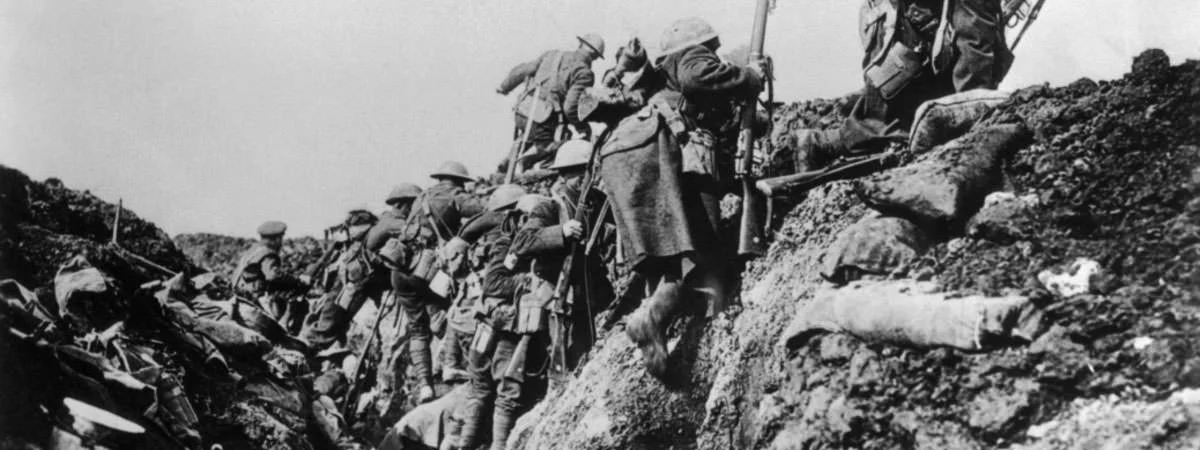World War I was a global conflict which began with the declaration of war by Austria-Hungary on Serbia on the 28th of July, 1914. The event leading to this was the assassination of Archduke Franz Ferdinand, the presumptive heir of the Austro-Hungarian Empire, by a Bosnian Serb. World War I pitted the Central Powers of Germany, Austria-Hungary, the Ottoman Empire and Bulgaria against the Allies which was a coalition of many nations, most prominently the Great Britain, France, Russia, Japan and Italy. It was fought for a period of more than four years and ended with the surrender of Germany on November 11, 1918. Also known as the Great War, it was one of the deadliest conflicts in history resulting in the death of an estimated nine million combatants and seven million civilians. Here is a short summary of the First World War including its major causes, main events and the most important effects.
CAUSES
THE RISE OF GERMANY
Most of the 19th century was dominated industrially, militarily and economically by Great Britain and France. This dominance was however being continuously challenged after the unification of Germany in 1871. By the end of the 19th century, Germany had become the largest economy in Europe and wanted to further its ambitions as a global power. This rise of Germany was accompanied by other factors which contributed to making the political environment in Europe tense.
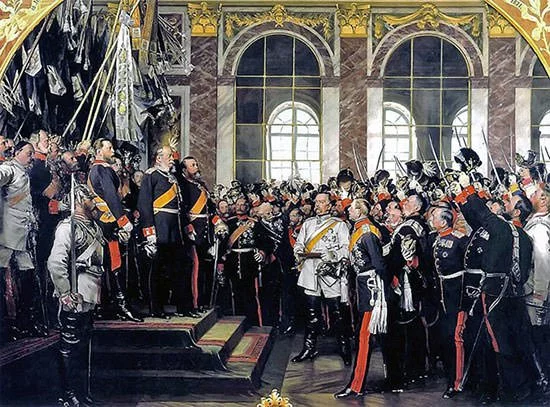
MILITARISM, NATIONALISM AND IMPERIALISM
In the years leading to the war, there was rise in Militarism with enormous spending in the arms race in the development of military technology. Nationalism was on a high. There was inflated confidence among the people in their own nation due to media propaganda and remarks of leaders which exaggerated their own importance while looking down and ridiculing the others. Moreover, the Great Powers were looking to expand their colonies as they brought in investment, resources, raw materials and markets for manufacturers. Due to these reasons, Europe was on a tipping point and just needed an incident to ignite a major conflict.
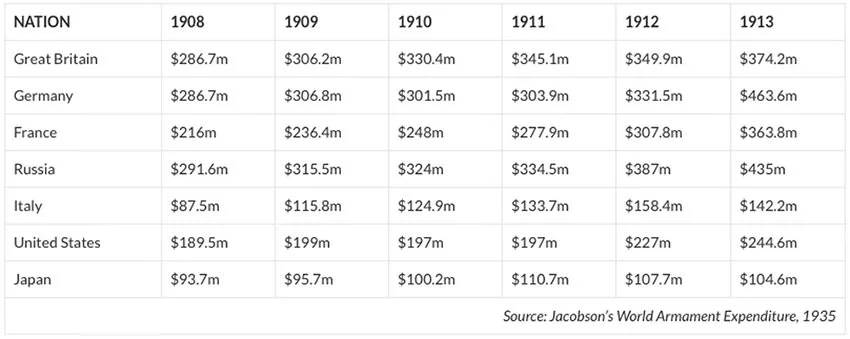
POLITICS OF THE BALKANS
The Balkan Peninsula refers to the area between the four seas; Black Sea, the Mediterranean, the Adriatic and the Aegean. In those times, this area was the European territory of the Ottoman Empire with various ethnic groups fighting for their independence. Russia, having cultural ties with the Slavic, followed a pan-Slavic foreign policy in the region, supporting Bulgaria and Serbia. This was also in keeping with its aim of accessing the waters of the Mediterranean from the Black Sea. The British wanted to deny Russia their goal. They thus supported the continuation of the Ottoman Empire. The French wished to strengthen its position in the region while Italy wanted to deny any major sea power access to the Adriatic Sea. The Germans, on the other hand, were eyeing the Ottoman Empire as their future colony. The region was thus not wrongly referred to as the “powder keg of Europe”.

ASSASSINATION OF ARCHDUKE FRANZ FERDINAND
In the tumultuous Balkan Region, Serbian nationalism was growing strong in the early 20th century and the ascension of a new king more favorable to the Russians in 1903, threatened Austria-Hungary. In 1908, the situation worsened in what is called the Bosnian Crisis, when Austria-Hungary announced the annexation of Bosnia and Herzegovina, territories formerly within the sovereignty of the Ottoman Empire. In June 1914, a Serbian-nationalist terrorist group called the Black Hand sent groups to assassinate Archduke Franz Ferdinand, the heir to the Austro-Hungarian Empire. On, 28th of June 1914, while on a visit to Sarajevo, the Archduke was assassinated along with his wife by a Bosnian Serb named Gavrilo Princep.
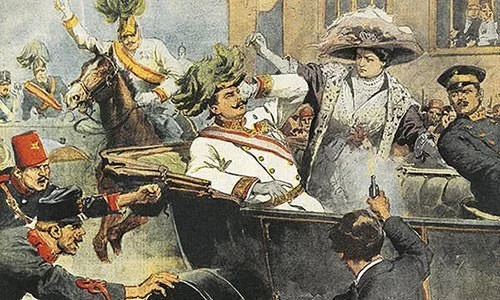
JULY CRISIS
In the aftermath of the assassination, Austria Hungry wanted to inflict a blow on Serbia, which it blamed for the event and which it knew was covertly supporting Yugoslav nationalism within Austro-Hungarian territory. Austria Hungary was however wary of the much larger and stronger Russian Empire which was supporting Serbia. Hence, it sought a guarantee from its own ally, Germany. On the 6th of July, Germany issued a ‘Blank Cheque’, promising unconditional support for Austria Hungary. On 23rd July, Austria-Hungary presented Serbia with a rigid ultimatum. On 25th July, Serbia replied accepting all but one of the demands. Nonetheless, three days later, on the 28th of July 1914, Austria-Hungary declared war on Serbia.
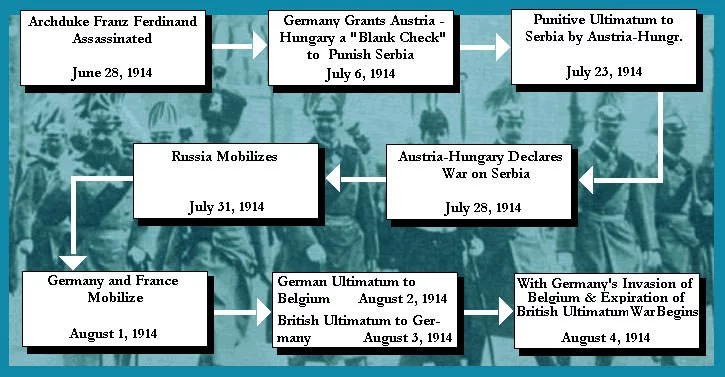
ALLIANCES
The alliance system came immediately into play after Austria-Hungary declared war on Serbia. This led to Germany declaring war on Russia on 30th July; and on France on 3rd August. They followed this by invading Belgium. On 4th of August, Britain declared war on Germany having pledged support to Belgium in the 75 year old Treaty of London. Finally, on 5th August, Austria declared war on Russia. Thus, due to the alliance system, all the major powers soon entered the conflict, escalating it into a World War.
EVENTS
WESTERN THEATER
The Western Front was the main theater of the First World War. It was a 400-plus mile stretch of land weaving through France and Belgium from the Swiss border to the North Sea. As war broke out, Germany planned on ending the French threat in a quick decisive defeat. Though their initial plans were successful with the invasion of Luxembourg and Belgium, the Allies defeated them at the First Battle of Marne ending their hope of a quick decisive victory. A follow up offensive was launched by the Allies but it was unsuccessful. Instead, the First Battle of the Aisne (September 13 – 28, 1914) marked the beginning of trench warfare and a stalemate on the Western Front that would continue up till the penultimate phases of WW1 in 1918. During this stalemate, there were numerous unsuccessful attempts to break through enemy lines. Among them were large battles of attrition with millions of casualties. The most notable being the Battle of Somme and the Battle of Verdun.
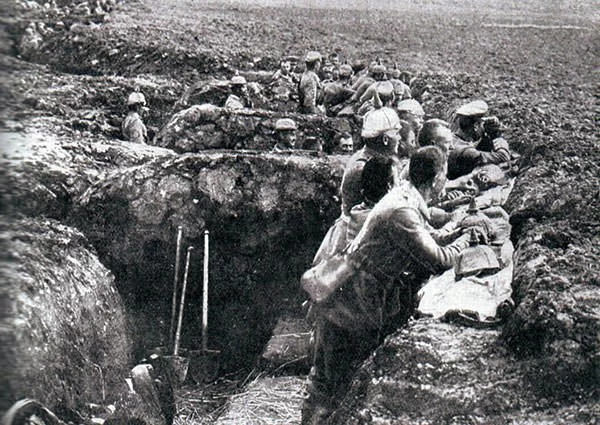
EASTERN THEATER
The Eastern Front of WW1 was roughly delimited by the Baltic Sea in the west; Minsk in the east; Saint Petersburg in the north; and the Black Sea in the south; a distance of more than 1,600 kilometers. The entire frontier had the Russian Empire and Romania on one side; and the Central Powers on the other. The Eastern Front saw the Central Powers defeating the Russian Empire in several major battles. This ultimately led to Russian withdrawal from WW1 through the Treaty of Brest-Litovsk. However, the Brusilov Offensive of the Russians, in June to September of 1916, was very successful and it forced Germany to send divisions from the Western Front to assist its allies. This, in turn, would ruin German plans on the Western Front. Thus, though Russia was ultimately knocked out of the war, it played a key role to prevent the Central Powers from getting a major breakthrough on the Western Front.
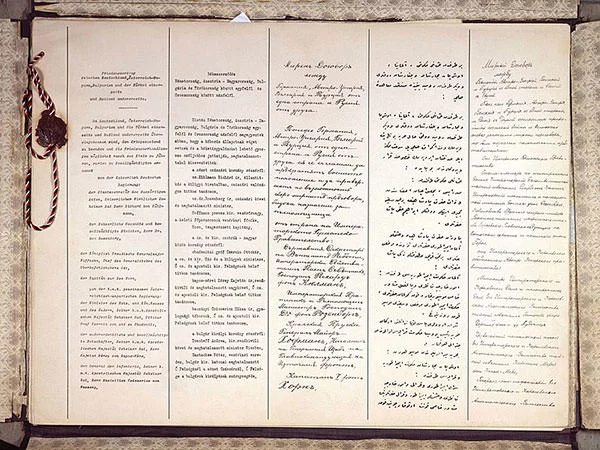
ITALIAN THEATER
Since 1882, Italy was in the “Triple Alliance” with Austria-Hungary and Germany. However, the Allies succeeded in convincing Italy to join the war on their side though the secret Treaty of London of April, 1915. As Italy joined World War I on May 23, 1915, a new front opened along the border between Austria Hungary and Italy. Fighting on this front centered mainly along the Isonzo River. There were 11 Italian attacks on the Isonzo but they were far from successful and had come at enormous Italian casualties. The Central Powers were able to get a resounding win in the Battle of Caporetto (October 24 – November 4, 1917) pushing the Italians almost 60 miles to the Piave River by November. However, this was followed by a failed offensive of the Central Powers. Then, the Italians routed the Austro-Hungarian army at the Battle of Vittorio Veneto forcing them to surrender on November 3, 1918.
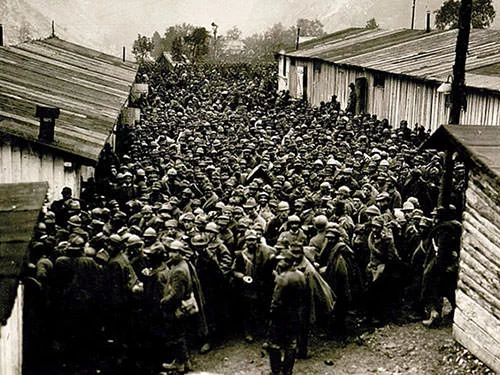
UNITED STATES ENTERS WORLD WAR I
For two and a half years since the break of World War I, America had maintained its neutrality in the war. Though neutral, it had been a major supplier to Britain and the Allied forces, and was thus often caught in the submarine warfare around the British Isles. After the sinking of Lusitania on May 7, 1915, in which 128 Americans were killed, Germany had pledged to ensure the safety of passengers before sinking unarmed vessels. By February of 1917, the war had put enormous strain on all participating nations. Thus Germany resumed its policy of unrestricted submarine warfare. American liner Housatonic and four more merchant ships were sunk, leading to outrage among the Americans. American president Woodrow Wilson would finally go to Congress on 2nd April, calling for a declaration of war on Germany. On April 6, 1917, the United States would join WW1 on the side of the Allies.
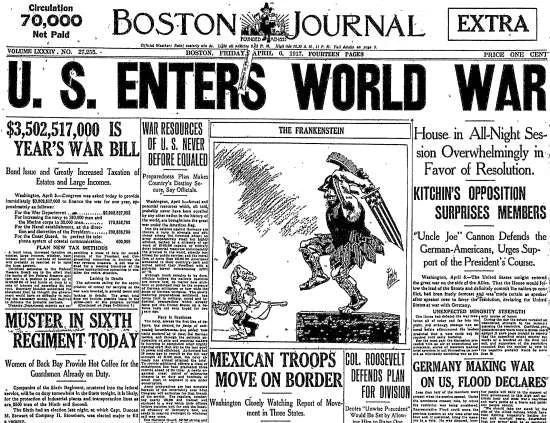
END OF WAR
The armistice with Russia in late 1917 had freed 48 German divisions on the Eastern Front, prompting Germany to consider breaking the deadlock on the Western Front in France. They were aware that their best chance lay in decisive victory before the arrival of overwhelming American forces and supplies. The German Spring Offensive was thus launched on March 21, 1918. However, after spectacular success in the beginning, the Spring Offensive faded out as the Germans were unable to move supplies and reinforcements fast enough to maintain their advance. By June 2018, almost 230,000 men were lost and Allies had managed to defend strategic areas by concentrating their strength. The German Spring Offensive was followed by the 100 Days Allied Offensive. It was a resounding success with the German forces retreating through territory gained in 1914 and finally surrendering on November 11, 1918.
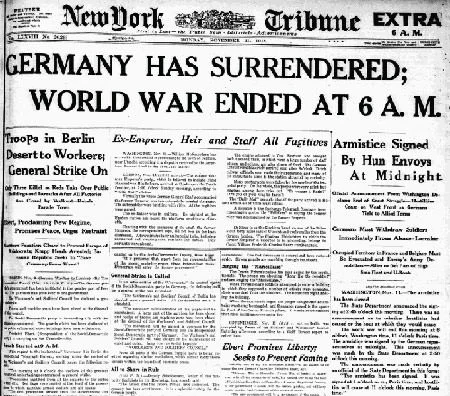
AFTERMATH
PARIS PEACE CONFERENCE
After the surrender of Germany on November 11, 1918 ended World War I, peace negotiations began in Paris in early 1919. The conference was dominated by the “Big Four” leaders of the victorious Allied nations namely: Woodrow Wilson of the United States; David Lloyd George of Great Britain; Georges Clemenceau of France; andVittorio Orlando of Italy (to a lesser extent). Russia had fought as one of the Allies but the Allies refused to recognize the new Bolshevik Government and thus did not invite its representatives to the Peace Conference. None of the defeated nations (Germany, Austria-Hungary, Turkey, and Bulgaria) were invited for consultations and even the smaller Allied nations had little or no say in the matter. The Treaty of Versailles with Germany became the hallmark of the Conference, though separate less controversial treaties were also signed with Austria, Bulgaria, Hungary and Turkey.
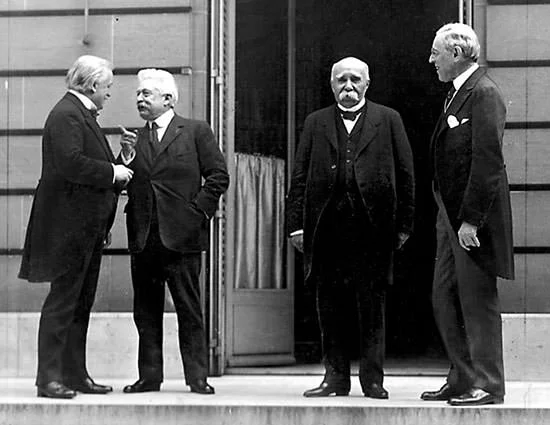
TREATY OF VERSAILLES
According to French and British wishes, the Treaty of Versailles subjected Germany to strict punitive measures. The Germans were required to surrender approximately 10 percent of their European territories to Belgium, Czechoslovakia and Poland; return Alsace and Lorraine to France; and give up all of its overseas colonies in China, Pacific and Africa to the Allied nations. The treaty in many ways put the entire blame of starting the war on Germany forcing it to drastically reduce its armed forces and navy. Adding to that the Inter Allied Commission thus formed asked Germany to pay $33 billion in war reparations in 1921, on top of the initial $5 billion payment demanded by the Treaty. The treat was thus much hated in Germany which felt humiliated in this dictated peace. It is thus counted among the primary reasons for the rise of the Socialistic Nazi party and Adolf Hitler. This, in turn, was the main reason for the Second World War.
EFFECTS
THE LOST GENERATION
World War I was a catastrophic event in terms of lives lost in the history of the world. Between 8 to 10 million died while fighting, one among eight combatants. Another 5 million civilians were also killed along with another 15 million seriously wounded and 7 million permanently disabled. Germany lost 15.1% of its active male population, Austria–Hungary lost 17.1%, and France lost 10.5%. In the early post-war period, among the major countries involved, it was difficult to find anyone who had not lost someone in the war. Approximately 65 million combatants from 28 countries fought in the conflict. There was great confusion and disillusionment among those that had returned. Most had gone to war believing in heroism and nobility but experienced a rude shock fighting in the trenches and experiencing the horrors of war. Those who fought in WW1 thus became known as “the Lost Generation” because they never fully recovered from the suffering.
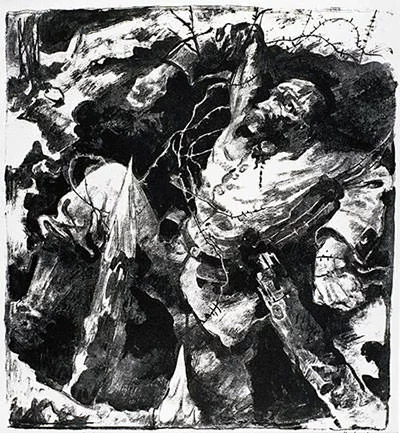
RISE OF NEW NATION STATES
Though ethnic nationalism was on a rise for decades before WW1, the powerful and age old empires had the strength and resources to keep it in check. The Great War depleted the power of monarchs and as their Empires collapsed, new nations were born and were now able to survive in the new world order. Austria-Hungary was split into Austria and Hungary and other independent states emerged from its territory, like Czechoslovakia and Yugoslavia. Russia and Germany gave land to Poland among other countries. Lithuania, Latvia and Estonia gained independence from Russia along with Finland. With the collapse of the Ottoman Empire; Syria, Jordan, Iraq and Palestine were declared “mandates” under the League of Nations. France essentially took control of Syria and Britain took control over the remaining three mandates. What was left of the Ottoman Empire became Turkey after the Turkish War of Independence.
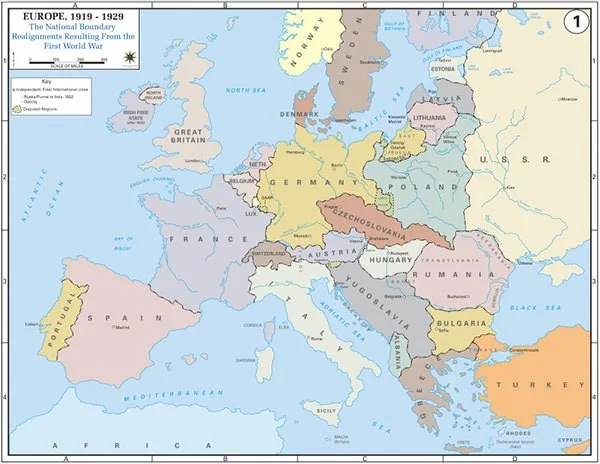
EMANCIPATION OF WOMEN
The First World War was a pivotal moment in the impact of women’s role in society. As warring countries mobilized for war and later entered a state of ‘total war’, millions of men entered the military and armed services. The drain in the labor pool caused by the vacating servicemen created a vacuum that could only be filled by the women. This meant that significant number of women entered into jobs, even in areas where they were traditionally thought to be incompetent like heavy industry, munitions and police work. Though the end of war in 1918 saw the respective societies wanting to return to the situation that existed before the conflict, the door had now cracked open and the beginning of a social change had begun. Several historians thus concede that the Great War constituted the first major step on the path to emancipation of women.

